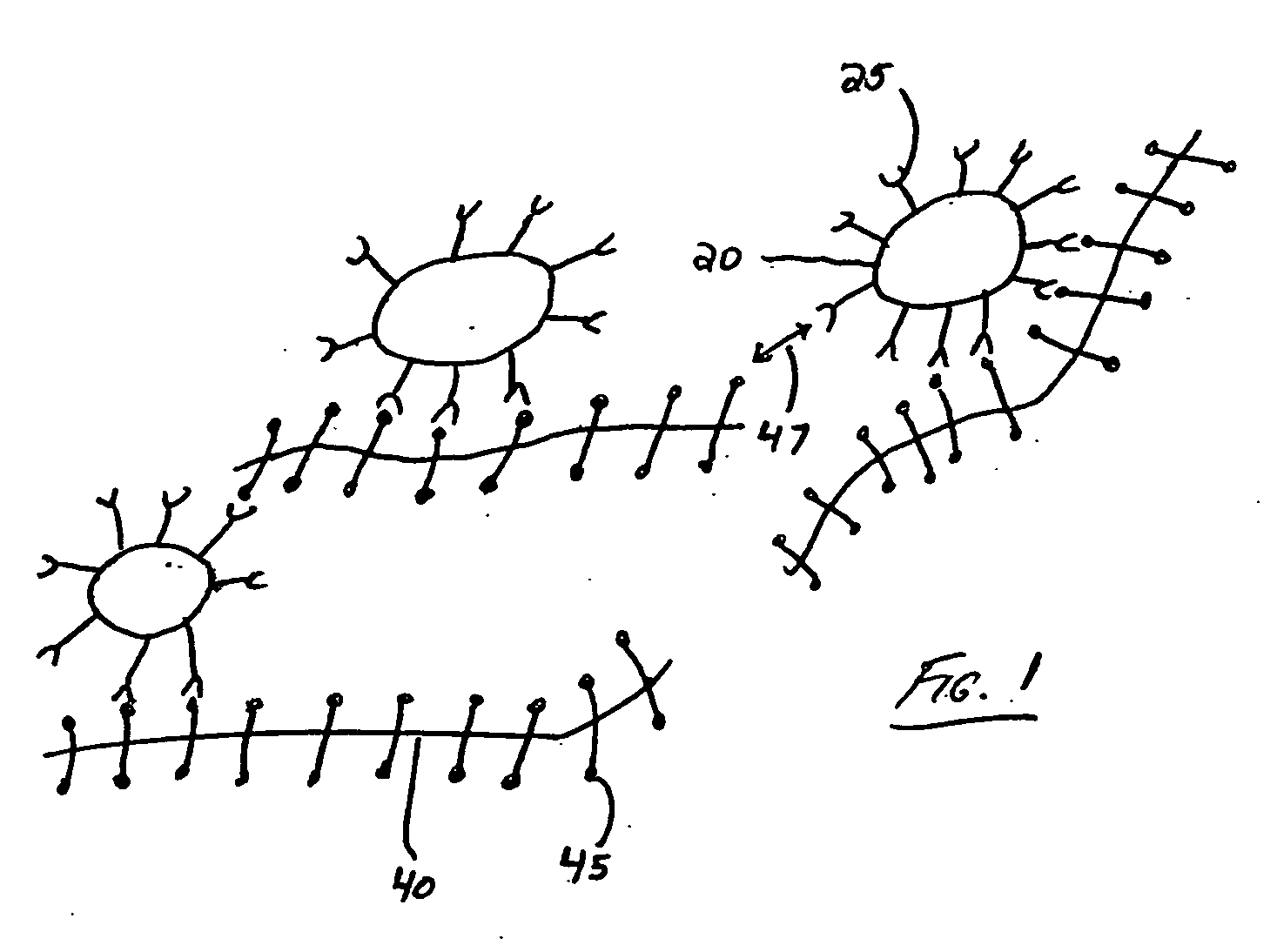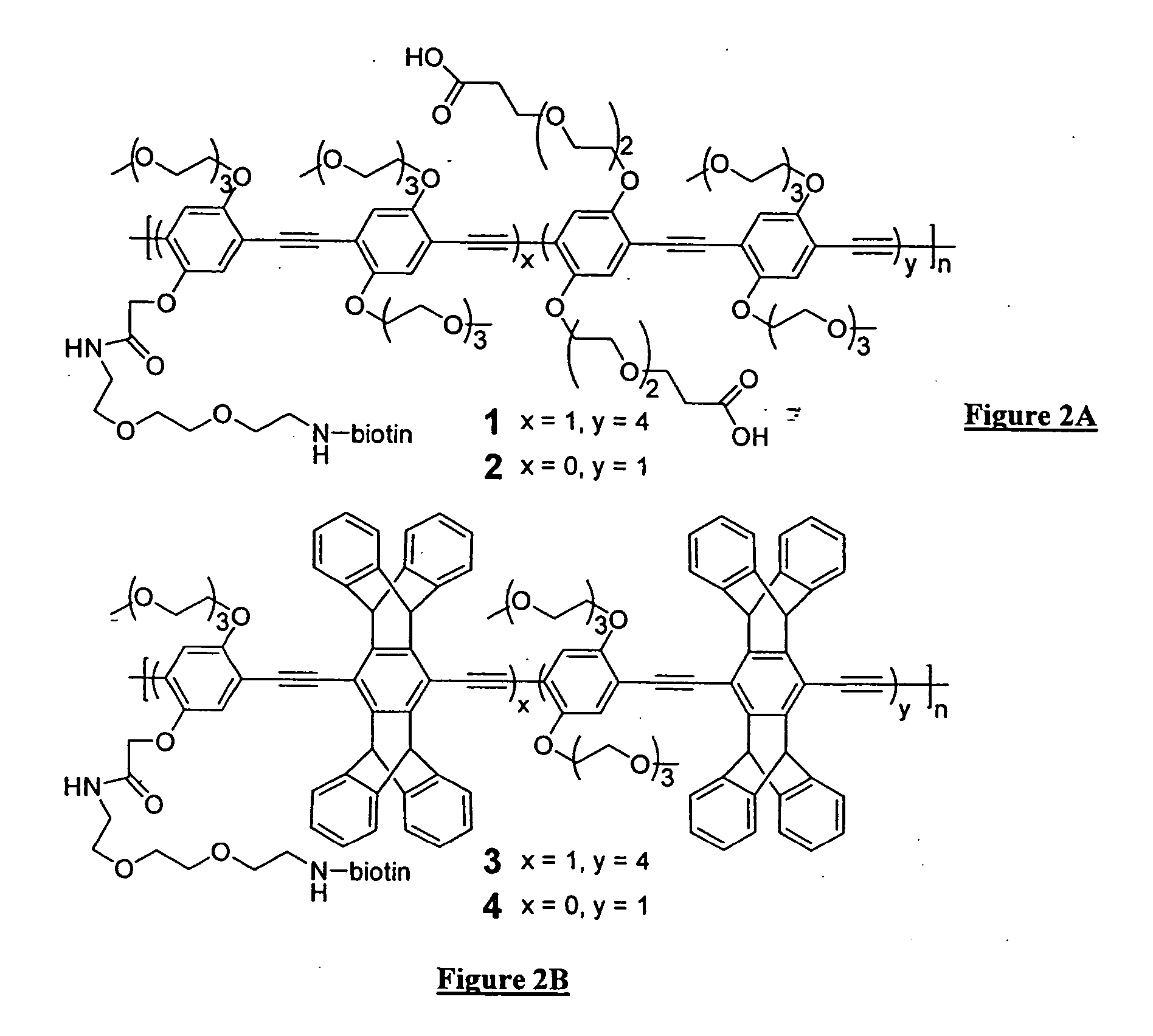Polymers for analyte detection
- Summary
- Abstract
- Description
- Claims
- Application Information
AI Technical Summary
Benefits of technology
Problems solved by technology
Method used
Image
Examples
example 1
[0067] In recent years, the fluorescence properties of conjugated polymers (“CPs”) have been investigated in the design of chemical and biological sensors, the majority of which have been based upon the amplification of fluorescence quenching. In contrast to turn-off sensors, a turn-on sensor using fluorescence resonance energy transfer (“FRET”) with CPs as light-harvesting donors has the advantage of being more sensitive and selective. Although FRET is widely used in biology to study biomolecular structure and dynamics, its use with CPs as a method of transduction for sensing biological molecules is not common. This example illustrates studies between biotinylated poly(p-phenylene ethynylene) (“PPE”) and fluorophore-labeled streptavidin. This example reveals that, unexpectedly, energy transfer in such a system is not governed by a typical Förster mechanism.
[0068] Streptavidin is a tetrameric protein that binds up to four molecules of d-biotin with a dissociation constant estimated...
example 2
[0089] This example illustrates a carbohydrate functionalized poly(p-phenylene ethynylene) (“PPE”) that can be used for detection of E coli by multivalent interactions. This polymer is functionalized after polymerization and provides a versatile scaffold for the rapid attachment of a variety of different carbohydrates (FIG. 6).
[0090] Coupling of the 2-aminoethyl mannoside and galactoside1to the PPE was carried out in the presence of 1-ethyl-3-(3-dimethylaminopropyl)-carbodiimide (“EDAC”) and N,N′-diisopropylethylamine for 16-24 h. This was followed by quenching of unreacted succinimide esters via addition of excess ethanolamine. Uncoupled reagents were removed by dialysis of the reaction mixture against water for 2 days. A phenol sulfuric acid test for carbohydrate loading showed that typically 25% of the reactive sites on the polymer were functionalized with glycosides.
[0091] To insure that the mannose moieties conjugated to the polymer retained their ability to interact with car...
PUM
| Property | Measurement | Unit |
|---|---|---|
| Fraction | aaaaa | aaaaa |
| Fraction | aaaaa | aaaaa |
| Nanoscale particle size | aaaaa | aaaaa |
Abstract
Description
Claims
Application Information
 Login to View More
Login to View More - R&D
- Intellectual Property
- Life Sciences
- Materials
- Tech Scout
- Unparalleled Data Quality
- Higher Quality Content
- 60% Fewer Hallucinations
Browse by: Latest US Patents, China's latest patents, Technical Efficacy Thesaurus, Application Domain, Technology Topic, Popular Technical Reports.
© 2025 PatSnap. All rights reserved.Legal|Privacy policy|Modern Slavery Act Transparency Statement|Sitemap|About US| Contact US: help@patsnap.com



